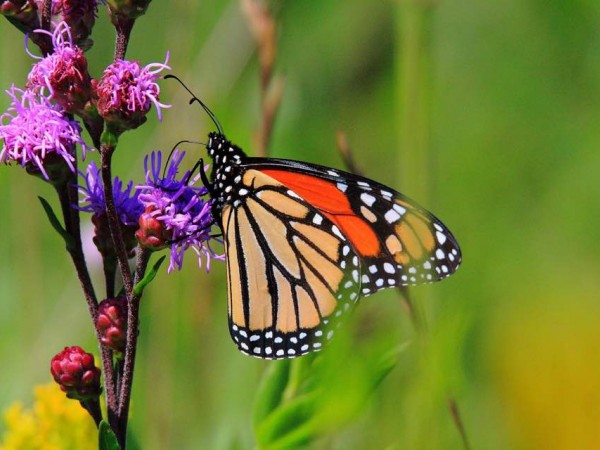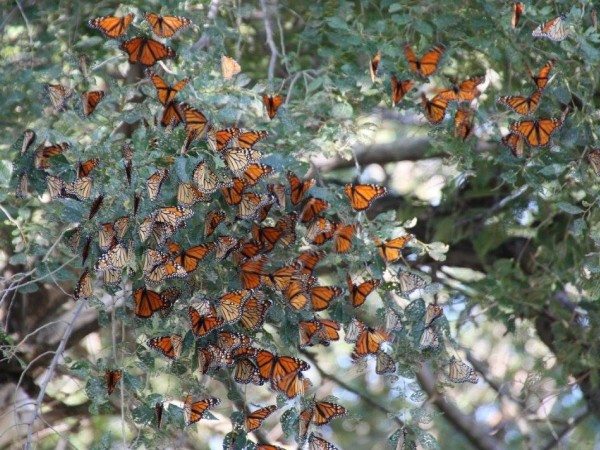Nectar and Migration
Momentum
The migration is clearly picking up steam. People saw butterflies flying over traffic, landing in gardens, and even crossing the Great Lakes.
"I saw three monarchs while I was in a sailboat in the middle of Lake Michigan," reported Sarah on Sunday, September 4th.
Fueling Up, Heading South
Along the migration trail, people noticed intense nectaring:
"Hundreds of monarchs arrived in my field to enjoy the garlic chive blossoms. They arise long before me, eat until the sun sets, and then roost for the night in the nearby trees," said Michael Wilford of St. Joseph, Michigan on Tuesday.
Building Lipids
As they travel, monarchs must find the food they need not only to fuel their migration but also to build sufficient lipid reserves for overwintering. They'll eat little to nothing during their 5-month stay in Mexico. A scientific paper by Dr. Lincoln Brower shows how lipid reserves increase as the monarchs move southward:
Stopover Habitat
The places monarchs feed and rest during migration are called stopover sites. Finding enough food is critical. You can help monarchs by creating a monarch Waystation. Plant flowers that continue to bloom late into the fall such as the Mexican Sunflower, Tithonia rotundifolia.



